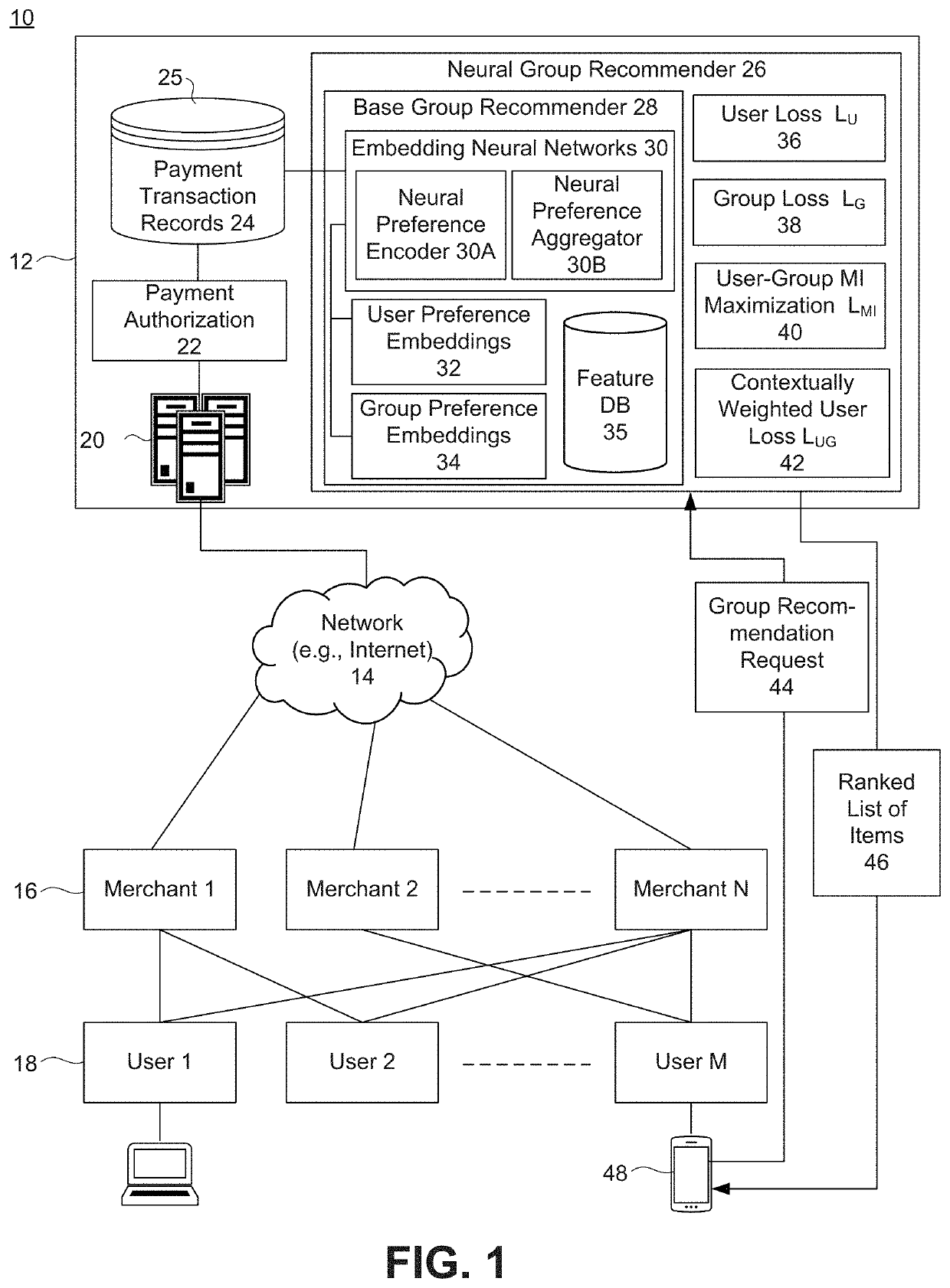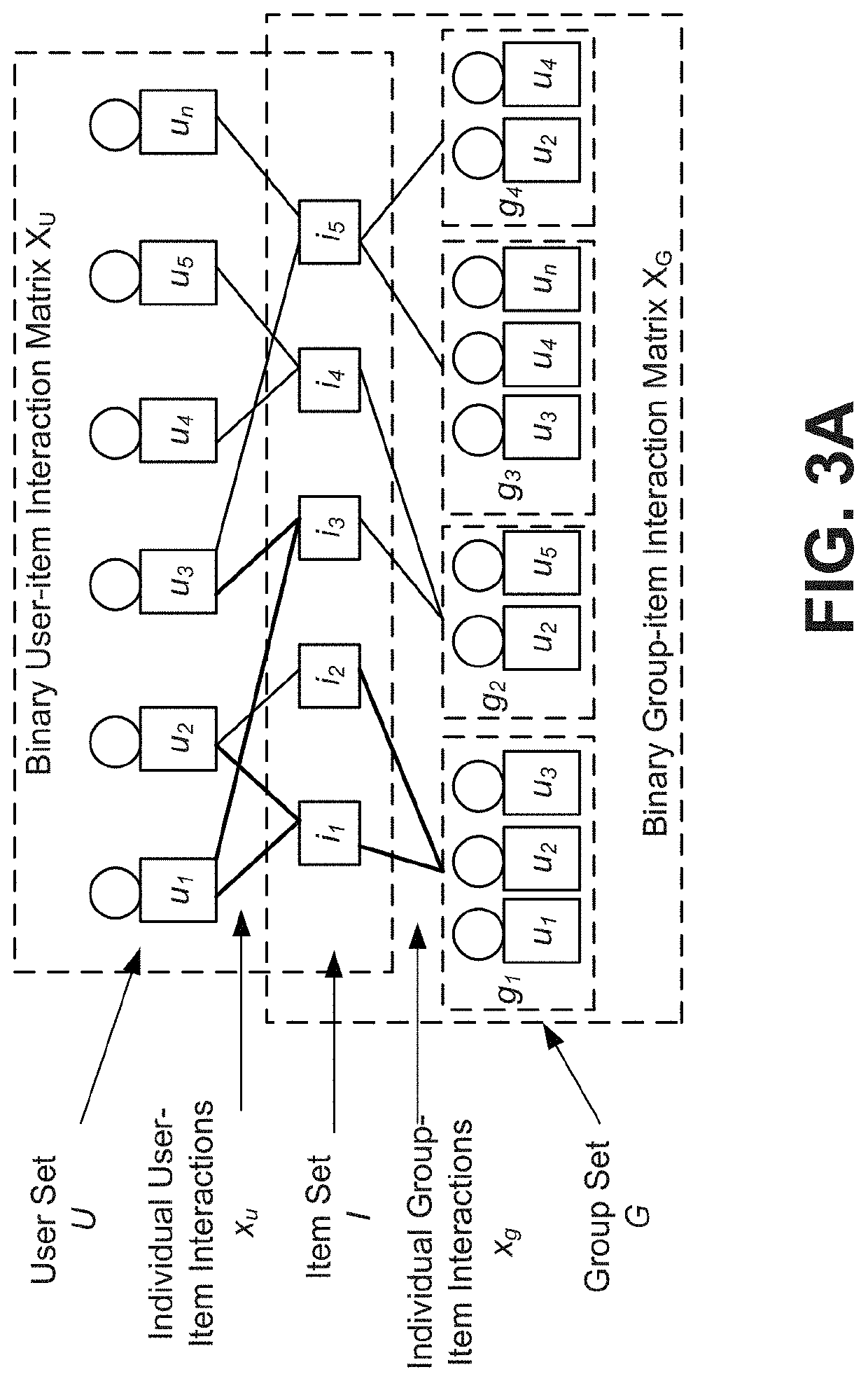Group item recommendations for ephemeral groups based on mutual information maximization
a mutual information and group recommendation technology, applied in the field of group item recommendations for ephemeral groups based on mutual information maximization, can solve the problems of degenerate solutions for sparse ephemeral groups and often unavailable side information
- Summary
- Abstract
- Description
- Claims
- Application Information
AI Technical Summary
Benefits of technology
Problems solved by technology
Method used
Image
Examples
example experiments
[0102]Datasets
[0103]First, example experiments were conducted on large-scale POI (Point-of-interest) recommendation datasets extracted from three location-based social networks. Since the POI datasets do not contain explicit group interactions, group interactions were constructed by jointly using the check-ins and social network information: check-ins at the same POI within a span of 15 minutes by groups of friends in the social network together constitute a single group interaction, while remaining check-ins at the POI correspond to individual interactions. The group recommendation task is defined as a recommending POIs to ephemeral groups of users. The datasets were pre-processed to retain users and items that have five or more check-ins each. Descriptions of each dataset are presented below:[0104]Weeplaces: check-ins are extracted on POIs over all major cities in the United States, across various categories including Food, Nightlife, Outdoors, Entertainment and Travel.[0105]Yelp:...
PUM
 Login to View More
Login to View More Abstract
Description
Claims
Application Information
 Login to View More
Login to View More - R&D
- Intellectual Property
- Life Sciences
- Materials
- Tech Scout
- Unparalleled Data Quality
- Higher Quality Content
- 60% Fewer Hallucinations
Browse by: Latest US Patents, China's latest patents, Technical Efficacy Thesaurus, Application Domain, Technology Topic, Popular Technical Reports.
© 2025 PatSnap. All rights reserved.Legal|Privacy policy|Modern Slavery Act Transparency Statement|Sitemap|About US| Contact US: help@patsnap.com



